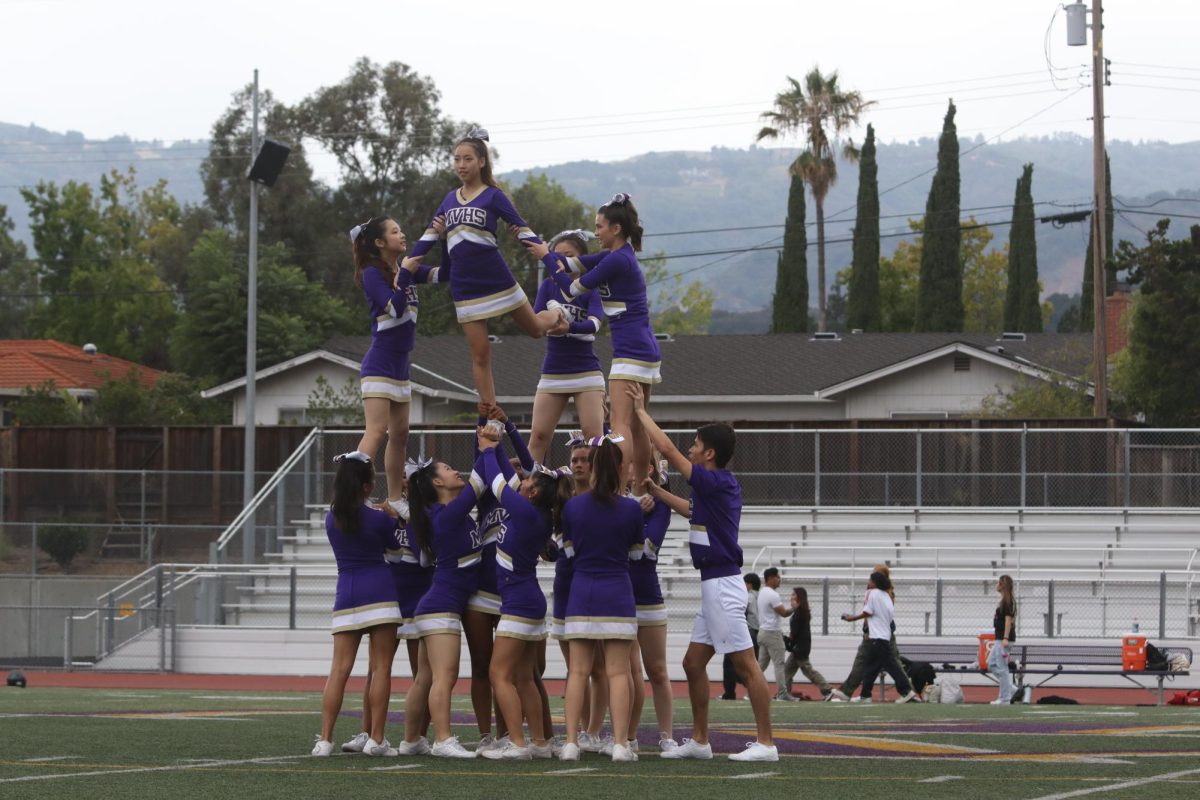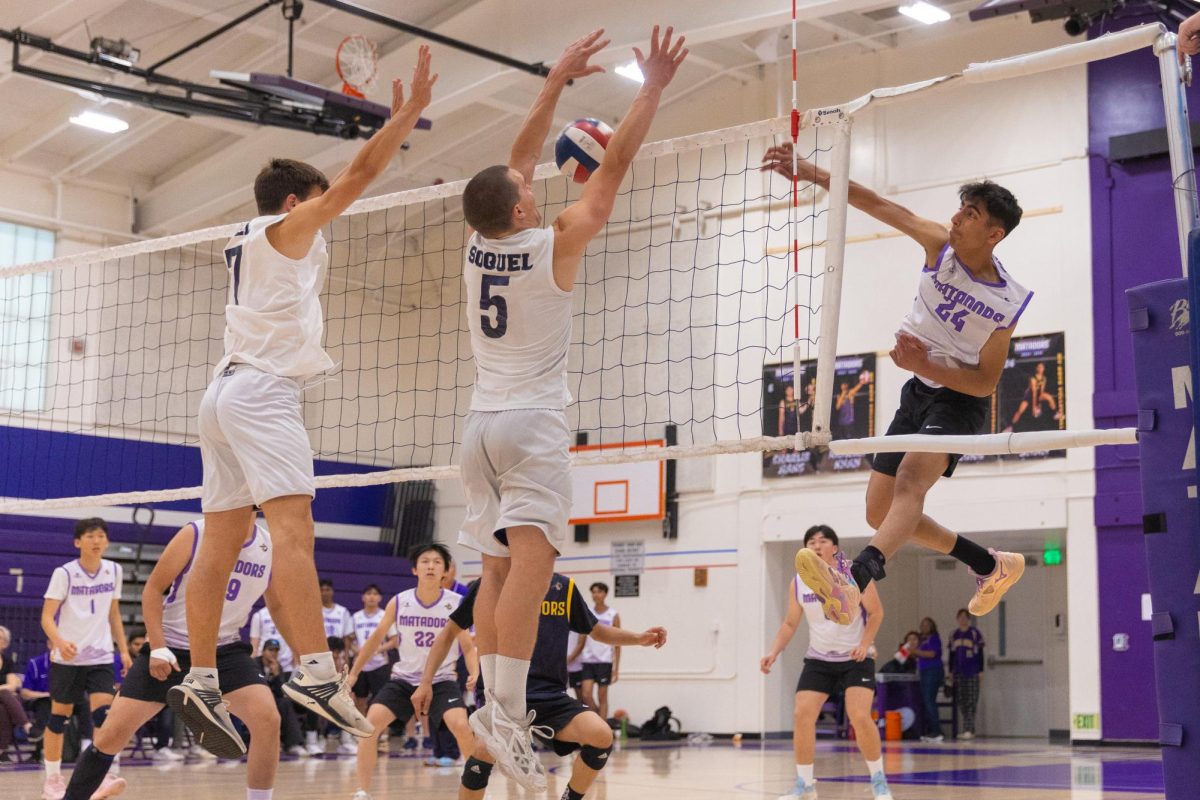Since she was 8 years old, Sanika Kothari has loved cheerleading. She recalls bursting into tears every time a practice was canceled and she didn’t get to practice flying. However, when Kothari was 12 years old, she started All-Star cheerleading and was placed in the position of base for the first time. Now a senior and team captain, Kothari has continued as a base on MVHS’s Cheer Team.
In cheer, there are three main positions within stunt groups: flyers, back spots and bases. Flyers are on top of the stunt and the back spot is usually the person who stands at the back, supporting the flyer by their ankles. Side bases hold the middle of the flyer’s foot while main bases hold the toe and heel of the foot in one-leg stances such as a lib.

Kothari, who has switched between main and side-basing, says that for both roles the cheerleaders have to put in a lot of hard work to ensure every routine is executed safely and successfully. Despite this, Kothari feels the audience often overlooks bases to focus on the performance of the flyers, creating a one-sided impression of cheer.
“People tend to focus on the flyers because they are the ones in the air — and they’re doing all the tricks and they’re showing off and they’re smiling,” Kothari said. “But I think, especially if you have watched a lot of cheer more or if you’ve done cheer before, you can kind of recognize more of the other positions because you actually know what work is going into it.”
Junior and co-captain Jooha Kim has been doing cheer since her freshman year and is a flyer. She echoes Kothari’s belief that flyers are the more noticed position.
“Oftentimes that’s what people think, cheer is the people on top,” Kim said. “But I think it’s important to recognize that cheer is a team sport. You have to look at the whole picture, [including bases and backspots].”
Expanding on Kim’s point, Head Coach Kendal Houck emphasizes how the roles of base and backspot are just as critical to executing routines as the role of flyer, and require just as much grit and hard work. Bases have to keep their eyes on the flyer at all times while maintaining eye contact with their base partner. Backspots have to make sure they are protecting both the flyer and themselves so that no one gets hurt.
Kothari understands the audience’s focus on flyers in routines, but feels that the importance of the base roles in cheer and the challenges that come with them should be recognized alongside that of the flyers.
“There’s definitely different perspectives,” Kothari said. “People usually just see the flyers, but I definitely think that [bases deserve to be recognized as much as flyers]. And when I put in work and the flyer is able to really make it look nice, that makes me feel good too.”












